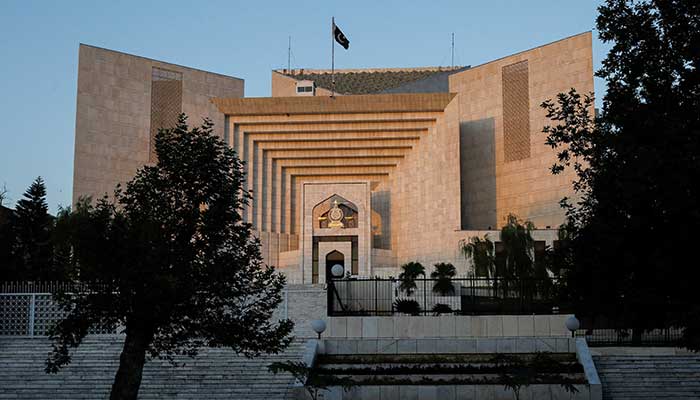
At the end of last year, Pakistan’s courts were dealing with approximately 2.3 million unresolved cases. Almost 83% were pending in the district judiciary; the rest was distributed among the high courts, the Federal Shariat Court and the Supreme Court.
The SC’s turnout was around 50,000, a few percentage points of the national vote at most.
Within the high courts, constitutional work is concentrated rather than dominant: in the Lahore High Court, for example, constitutional and injunction matters account for about 84,000 of the roughly 179,000 pending cases, about half of that court’s docket, but that entire body remains a fraction next to the millions of cases stalled below.
Backlog in Pakistan remains, by any measure, a daunting problem for the trial courts.
Faced with these data, parliament has acted with unusual speed. In a short period of time, a constitutional amendment has been pushed that creates a Federal Constitutional Court (FCC), displaces the constitutional jurisdiction of the existing Supreme Court, and addresses sensitive issues of state design, with little committee scrutiny or public participation.
The government’s explanation is simple. We are told that the SC is drowning in constitutional and “political” litigation, which has displaced ordinary appeals. The FCC offers itself as a solution: it will shoulder the constitutional burden; the Supreme Court will focus on its appellate function; and the quarrel will fall.
The statement of objects and reasons of the Constitution (Twenty-Seventh Amendment) Act 2025 says as much, blaming an “increasing number of constitutional petitions” for delays in regular cases and promising that a specialized court will “significantly reduce pendency”.
That narrative has already been questioned from within the system. Former Chief Justice Jawwad S Khawaja brought the amendment to the court he once headed, warning that it will weaken the state, disrupt the separation of powers and erode consensus around the 1973 Constitution.
Since then, the debate moved from draft to facts. President Asif Ali Zardari has signed the 27th Amendment into law, creating the new office of the chief of defense forces and establishing the FCC as an operational reality rather than a proposal.
In response, three senior judges, Supreme Court Justices Syed Mansoor Ali Shah and Athar Minallah, and Lahore High Court Justice Shams Mehmood Mirza, resigned in protest, describing the amendment as an assault on the constitution and judicial independence.
The question for this article, however, is more specific: If the claim is that the FCC is all about delay relief for the ordinary litigant, do the numbers support that claim?
The SC’s pending caseload has increased from around 20,000 in the mid-2010s to around 40,000 in 2018 and from over 50,000 in 2021 to mid-50,000 in 2024-25.
Compared to the national picture already mentioned above, this turns the high court into a small but visible pocket of congestion rather than an epicenter of delay.
Constitutional work, even when pooled, is numerically marginal once it moves away from the higher courts and into the system as a whole. Even in the higher courts where constitutional and judicial matters occupy a large part of the local agenda, that entire layer is on top of a system in which there are more than 2.3 million cases pending, the vast majority in the lower courts.
From any realistic point of view, the SC’s constitutional workload is therefore well below even one or two percent of the national total; Even if all the cases on their list were renamed “constitutional,” it would barely affect the overall numbers.
The court itself has acknowledged that a large portion of its record consists of petitions for review rather than new constitutional challenges. And in his own jurisprudence on special courts, he has warned that creating new forums or simply adding judges does not cure delay; The real work lies in case and court management, especially at the lower levels.
Taken together, the data and doctrine point in the same direction: delay in Pakistan is overwhelmingly a trial court phenomenon. The problem the FCC aims to solve is numerically marginal.
Under the 27th Amendment, the FCC is designed to exercise original constitutional jurisdiction, including federal-provincial disputes and many fundamental rights issues, while also hearing constitutional appeals from higher courts.
The existing SC is largely recast as an appellate court for other jobs. Ironically, even if we very generously assume that one-third of the cases currently pending in the Supreme Court are “constitutional,” we are dealing with perhaps twenty thousand such cases in a system of more than 2.3 million. On that assumption, the FCC’s primary field of operations covers well less than one percent of the pending cases in Pakistan.
Nor will the FCC simply inherit existing issues and resolve them quietly. The new courts generate their own litigation: jurisdictional disputes between the Supreme Court, the FCC, and higher courts, composition and appointment challenges, new levels of appeal and review. An agency created and justified as a relief mechanism for the “ordinary litigant” is, by design, aimed at the smallest and most elite portion of the docket.
All of this might still be defensible if the FCC were cheap. It is not. The SC budget for 2023-24 is around Rs 3,500 crore, largely consumed by salaries and allowances.
A parallel constitutional court, with its own judges, registries, security, infrastructure and personnel, although initially small, will operate on the same order of magnitude.
Those billions are being contemplated amid an IMF program that calls for strict fiscal consolidation, cuts in non-priority spending and difficult adjustments in the social and development sectors. Meanwhile, the district judiciary, which bears more than four-fifths of the backlog, struggles with basic infrastructure, staff shortages and overstretched judges.
The same capital injected into capacity at the trial level in the form of more judges and clerks, reliable trial services, functional courtrooms, alternative dispute resolution mechanisms, case flow management and information technology would strike at the heart of the delay.
Justice Khawaja’s petition therefore reads less as a personal lament and more as a diagnosis. The amendment, he maintains, is “so patently unconstitutional on its face” that it should have been rejected by parliamentarians sworn to preserve and protect the Constitution.
An amendment stripping the SC of its constitutional powers “effectively abolishes [it] as a constitutional court” and is “clearly incompatible with the constitution.
If the legislature and executive can abolish the supreme court and replace it with another forum run by their nominees, they are empowered to “change the rules of the game when they see fit,” an outcome fundamentally contrary to the separation of powers and judicial independence.
The federal government asks us to view the FCC as a show of kindness to the average litigant. The figures suggest something else: that the new court is not aimed at the accumulation of cases that overwhelm citizens, but at the accumulation of constitutional issues that overwhelm power.
If it is to be born in the name of the ordinary litigant, the least we owe that litigant is honesty about the problem whose solution it is really being built to solve.
Originally published in The News



